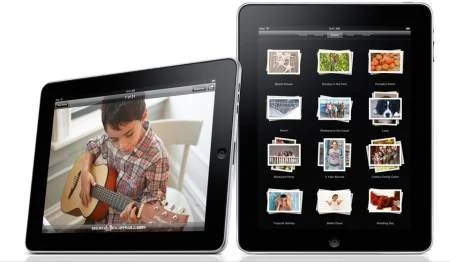I was going through the coverage of the iPad and searching on terms like JesusPad and GodPad expecting to find at least some folks raving about the device only to find that most are rants.
This is reminding me of the initial launch of the iPhone which, even though it sold well for a first generation device, didn’t really hit its stride until generation 3 and now is one of the must have Smartphones on the market.

With the iPhone we actually knew a lot about what people wanted and weren’t getting in a Smartphone and it still took 3 generations of the product before Apple was able to match the offering to expectations. Most of the complaints now seem to focus on Apple’s policies or carrier service, even so the 4th generation iPhone is rumored to be vastly improved.
The iPad Problem
The iPad is a different class of device and much of what this device will actually consume hasn’t been created yet. We don’t yet know if the size of the device is too large or too small, whether people will accept a device that will be used for reading with a display that can’t be viewed outdoors, or whether they will even accept an LCD for a reader this time (LCD readers have historically failed).
But to create a perfect product someone has to create a product that people can and will use so that information can be gathered and a better product built. But designing the product isn’t the only problem this time.
The Content Problem
Typically you have a cart and horse problem with a new offering. Until there are enough products in market application developers don’t want to support a new hardware platform and until there are enough applications manufactures don’t want to build a new device because folks won’t buy it. This suggests a big risk that Apple is initially taking in terms of bringing this to market because the ecosystem for this product won’t be complete enough for years. But if they didn’t bring out the device at all the ecosystem would never even be started.
The Slow Launch
Apple is also controlling the amount of product in stores and available for pre-order. Some think this is because Apple wants to build a buying frenzy. While this might be partially true the real reason is to manage disappointments and breakage.

If you bring out 10M products and have 10% breakage you’ll overwhelm support and have a potential return problem that could cripple the company, but if you ship at 1/10th this volume even at 10% the breakage is manageable and won’t kill the offering.
All 1.0 products have a lot of risk associate with them and by starting with low volumes and then ramping up when the problems are either understood or eliminated Apple can assure the market sees a more positive launch, one the product can survive, then would likely otherwise be the case.
By the second half of the 3rd quarter Apple should be at full production and be able to sell at close at volumes several times initial volumes with less breakage. This is a lot smarter than what most manufacturers do which is wait until 3rd quarter, ramp the product, and then pray that something isn’t so badly broken that the result puts the company out of business.
Wrapping Up: The iPad is a Nice Start
The iPad isn’t the perfect product, even after 3 generations it won’t be perfect. You’ll be reminded of this when the 4th generation iPhone arrives in a few weeks. But, as generation 1.0 products go, the iPad is a nice start.
If you don’t set your expectations too high or wait for a version that better matches your needs you should be pleasantly surprised. If you expect this thing to be a turd or to change your life in some meaningful way you’ll likely be disappointed. Expect the price to drop, expect it to improve a lot year over year (just look at where the iPod started) and expect it to eventually have a big impact; just don’t expect all of that with the first version.
Rob Enderle is one of the last Inquiry Analysts. Inquiry Analysts are paid to stay up to date on current events and identify trends and either explain the trends or make suggestions, tactical and strategic, on how to best take advantage of them. Currently he provides his services to most of the major technology and media companies.






